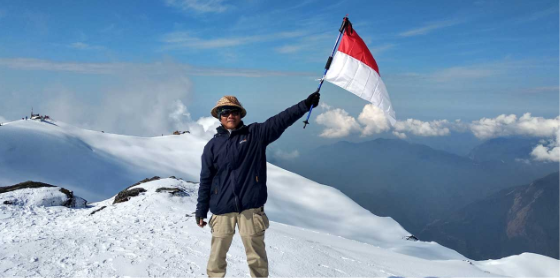The Everest Three Passes Trek is a thrilling and comprehensive high-altitude trek in the Everest region, designed for trekkers seeking more than just a trail to Everest Base Camp. This adventurous circuit connects three of the highest and most scenic passes in Nepal: Kongma La (5,535m), Cho La (5,420m), and Renjo La (5,360m). It is the ultimate Himalayan experience, offering panoramic mountain views, remote valleys, glaciers, and cultural richness in a single challenging yet rewarding itinerary.
Unlike the classic Everest Three Passes Trek Base Camp route, the Three Passes Trek is a loop, offering new scenery almost every day. This route is ideal for experienced trekkers who want to fully immerse themselves in the grandeur of the Khumbu region while escaping the crowds found on the standard trails.
Highlights of the Everest Three Passes Trek
- Cross three high-altitude passes with spectacular panoramic views
- Visit Everest Base Camp (5,364m) and Kala Patthar (5,545m)
- Explore the turquoise Gokyo Lakes and climb Gokyo Ri (5,357m)
- Experience authentic Sherpa culture in villages like Namche, Thame, and Dingboche
- Traverse glacial valleys, moraines, and high Himalayan ridges
- Breathtaking views of Everest, Lhotse, Nuptse, Makalu, Cho Oyu, and Ama Dablam
Trek Itinerary Overview
Day 1: Fly to Lukla, Trek to Phakding (2,610m)
Begin your journey with a scenic flight to Lukla. After landing, hike through rhododendron forests and cross suspension bridges to reach Phakding.
Day 2: Trek to Namche Bazaar (3,440m)
Ascend alongside the Dudh Koshi River, cross the Hillary Suspension Bridge, and climb up to Namche Bazaar, the bustling Sherpa town and acclimatization hub.
Day 3: Acclimatization in Namche Bazaar
Spend the day exploring local museums, hiking to the Everest View Hotel, or visiting Khumjung village. Acclimatization is key for success on the high passes.
Day 4–5: Trek to Tengboche and Dingboche (4,410m)
Continue through the alpine forests to Tengboche, home to a famous monastery, then trek onward to Dingboche, with its stunning views of Lhotse and Ama Dablam.
Day 6: Acclimatization Day in Dingboche
Hike to Nangkartshang Peak (5,083m) or take a short walk around the valley to help adjust to the altitude.
Day 7: Cross Kongma La (5,535m), Trek to Lobuche (4,910m)
This is the first and highest of the three passes. The crossing is challenging and remote, with spectacular views of the Everest range. Descend to Lobuche for the night.
Day 8: Trek to Everest Base Camp (5,364m), Overnight at Gorakshep (5,164m)
Follow the Khumbu Glacier to Everest Base Camp, where climbers prepare for their summit bids. Return to Gorakshep for a high-altitude overnight stay.
Day 9: Climb Kala Patthar (5,545m), Trek to Dzongla (4,830m)
For the best view of Mount Everest, climb Kala Patthar at sunrise. Then descend and head to Dzongla, a quiet village below the next pass.
Day 10: Cross Cho La (5,420m), Trek to Gokyo (4,790m)
Cho La is a dramatic and icy pass connecting Everest and Gokyo valleys. After a steep climb and glacier crossing, reach the shimmering Gokyo Lakes.
Day 11: Climb Gokyo Ri (5,357m), Explore Gokyo
Climb to the summit of Gokyo Ri for panoramic views of Everest, Cho Oyu, and the entire valley of lakes. The view from here is often considered the best in the Khumbu.
Day 12: Cross Renjo La (5,360m), Trek to Lungden (4,380m)
Renjo La is the final and arguably most scenic of the three passes. The descent to Lungden is steep and dramatic, with breathtaking mountain vistas.
Day 13–14: Trek to Namche Bazaar, then Lukla
Pass through the remote village of Thame, once home to famous mountaineers, and return to Namche. The final stretch leads you back to Lukla for a well-earned rest.
Day 15: Fly to Kathmandu
Celebrate your successful completion of the most comprehensive trek in the Everest region with a scenic flight back to Kathmandu.
Difficulty and Preparation
The Everest Three Passes Trek is physically demanding due to the altitude, long days, and steep ascents. Prior trekking experience is highly recommended. A good fitness level, mental resilience, and proper acclimatization are essential for a successful journey.
Training should include cardio, strength training, and long hikes. Hiring a licensed guide and porter adds safety and insight, especially when navigating the passes in changing weather conditions.
Best Time to Go
- Spring (March–May): Warm days, blooming rhododendrons, and clear mountain views.
- Autumn (September–November): Ideal weather and visibility, most popular season.
- Winter (December–February): Cold and snowy; not ideal for the passes.
- Monsoon (June–August): Risky due to rain, landslides, and obscured views.
Permits Required
Trekkers need:
- Sagarmatha National Park Entry Permit
- Khumbu Pasang Lhamu Municipality Permit
- TIMS Card (optional for guided groups)
All permits can be arranged by a trekking agency or in Kathmandu.
Final Thoughts
The Everest Three Passes Trek is more than just a hike—it’s a full Himalayan expedition. From snow-covered passes and turquoise lakes to high mountain monasteries and Sherpa hospitality, every day offers a new and unforgettable challenge. This trek is the ultimate choice for adventurous spirits looking to experience the best of the Everest region beyond the usual path.

